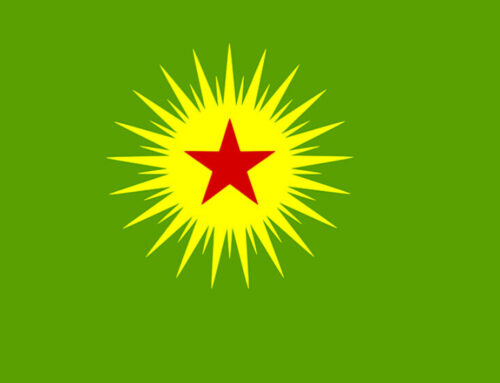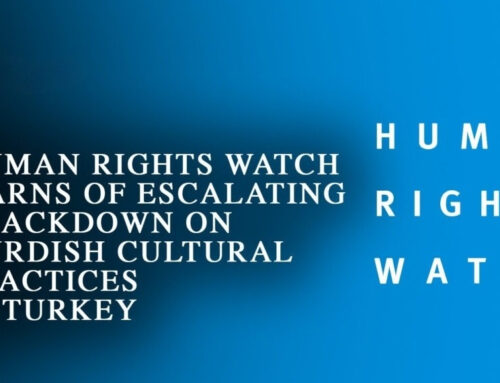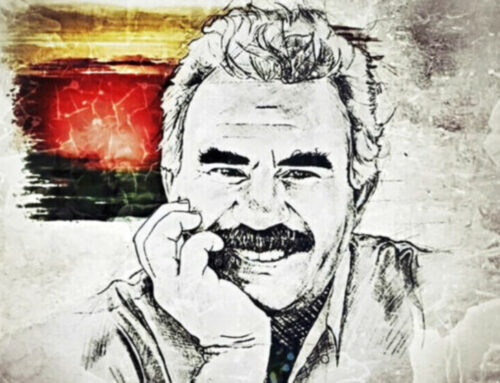Yezidis – A Kurdish community under persecution
Yezidis – A Kurdish community under persecution
The Yezidis are an integral part of the Kurdish society. They speak Kurmanji, a Kurdish dialect with some elements of the Persian language. The word Yezidi itself comes from Kurdish and means "the one who created", ie the Creator - God.
Before the wars in Iraq and Syria, the Yezidis were estimated at about 700,000, but the vast majority of the community - half a million to 600,000 - are concentrated in northern Iraq. The city of Sinjar is their center, which in 2014 was under genocidal attacks by ISIS Islamists, at the behest of Turkey.
The shrines looted and vandalized by the armed groups included the shrine of Sheik Junaid in Faqira village, the shrine of a king in Qibar village, the shrine of Sheik Hussein, the shrine of Gilkhan and the shrine of Sheik Rikab in Shadiri village.
Their brothers from the rest of Kurdistan, including YPG armed groups and YPJ women, rushed to the aid of the Yezidis, while they themselves formed a battalion of Yezidi women, the Sun Girls Brigade (SGB).
Religion

The Yezidis are believers of religious syncretism, that is, their faith is a mixture of practices of various schools of thought and ancient religions. The founder of the community was an 11th century sheikh, Andy Ibn Musarif, with roots in the first major Islamic political dynasty. His tomb is located in the city of Lalis and is a place of pilgrimage for the Yezidis, while it was recently targeted by terrorists and Turkey. Today, it is under the protection of Kurdish fighters.
Although they have ties to Islam, their faith is significantly different from it, while historically it predates it. The Yezidis follow pre-Islamic and Persian traditions, believe in a form of reincarnation and apply a strict caste system. They share elements with Christianity, with the Hindu religion, with Zoroastrianism which had prevailed in what is now pre-Islamic Iran, and with Mithraism - a monotheistic religion that was popular in the centuries of Roman rule, especially among the soldiers.
With the Zoroastrians, the Yezidis share the worship of fire, while for both, white is the traditional color of clothing. Historically, Yezidi leader Mir Tahsin Saied Beg, member of the Yezidi Miavi princely family, Fakhr Ali, the religious leader in Germany, and others have argued that the Zoroastrian religion is the ancient Yezidi religion. At the same time, the Yezidis share with Mithraism the slaughter of the bull, a custom that alludes to the sacraments of the deity of Mithras, and the worship of the sun through daily ceremonies.
They usually light candles in their ceremonies, as a symbol of the triumph of light over darkness and believe in a God represented by seven angels. One of them, Melek Taus, was sent to Earth after refusing to submit to Adam, as he considered that he was made to worship only the creator, and because Adam was made of clay while he himself was made of the God’s own "enlightenment". This archangel was fallen, until his repentance brought him back to the favor of God, who forgave him after extinguishing the flames of his fiery prison with 7,000 years of tears.
This myth of Melek Taus is extremely similar with a similar myth of Sufism (a branch of Islam), where the angel Shaitan (or "Iblis", a word that may come from the Greek word "diavolos" (devil) - "Shaitan" from the Hebrew "Sātān" ) also refused the divine command to worship Adam and Eve. The myth of Lucifer of the Christian religion is also similar, but he, like Shaitan, did not repent. While Muslims and Christians see the angel's denial as a sign of arrogance and blasphemous pride, the Yezidis see it as a sign of independence and freedom of choice. They argue that love for one's neighbor is not a command, but must stem from the individual's free choice. Evil is not imposed nor comes from someone else, but finds its origin in man himself.
In Turkish, the word "tavus" comes directly from the ancient Greek "taos", which means the same thing: "peacock". The word "Melek" comes from the Hebrew "Mallah" or the Arabic "Malak", which means "angel" (or "king").
Melek Taus is the protector of agriculture and the teacher of mankind, and he was sent to earth by God to teach order and law. Historically, the Yezidi archangel resembles the god Nabu of the Sumerians, son of the father god Marduk of Mesopotamia. Melek Taus is in the form of a peacock, and although he is considered to be neither good nor evil by the Yezidis, radical Muslims insist on calling him "Satan", which is completely unfounded and an outright propaganda effort. On the contrary, according to the Yezidis, the archangel is the cause for both good and bad fortune in people, and assigns responsibilities and obligations to them. The Islamic State (ISIS) had even tried to justify the massacre of the Yezidis by saying that they were "devil worshipers".
Along with Melek Taus, the Yezidis believe in other angelic creatures, such as Sheikh Adi, Sheikh Asin, Sheikh Ses, Sheikh Obekir, Sheikh Fakraddin, Sheikh Siyantin, while the sun and the moon are sacred symbols of their faith. Specifically, Shaykh Ses symbolizes the sun and Shaykh Asin the moon. These two celestial bodies represent the light of God.
Within their religion, every Yezidi is obliged to fast three times a year, thus expressing his faith in God and his gratitude for the Earth. Finally, every Yezidi believer must visit the Lalişa Nûranî shrine in southern Kurdistan once in their lifetime, and most take this annual pilgrimage as a meeting of the "large Yezidi family".
The Yezidis during the Ottomans

The Yezidis have long respected both the Qur'an and the Bible, but have their own sacred texts that they consider superior, such as the "Book of Enlightenment" (or "the Book of light"), and have a variety of oral traditions, which are transmitted in Kurdish, while their religious services are also performed in Kurdish.
Although they believe in the one and only god, without being Muslims, the Yezidis did not really exist as a community for the authorities of the Ottoman Empire and were recognized only in 1849.
This, however, did not protect them from the attempt of violent conversion to Islam in 1894, during the reign of Sultan Abdel Hamid II.
A group of Yezidis then asked the patriarchs of the Syrian Orthodox Church to seek refuge in the Monastery of Saint Ananias (Dêra Zehferanê) in Mardin - north of Sinjar - and to declare them Christians, to which the patriarchs agreed. They knew, however, that these "worshipers of the Sun" (as they pray every morning looking in his direction) were merely typical, and not actual members of the Christian community.
Yezidis and Yarsanis

The Yezidi religion and the Yarsani religion in Iran have many similarities as both communities honor Melek Taus and the other six archangels. The angels speak the Kurdish language and have the same names.
Both the Yezidis and the Yarsanis believe in the "pearl" theory, according to which the earth was created from fragments of pearls, since the pearl is considered a symbol of purity but also a symbol of the creator god.
The Yezidis today

After the establishment of the state of Iraq, the Yezidis, like other Kurdish tribes, suffered from the policy of violent "Arabization" pursued by Saddam Hussein's regime.
However, after the fall of the Ba'athist regime in 2003, both the government of the autonomous Iraqi Kurdistan and the new Iraqi federal constitution granted the Yezidis complete religious freedom.
Apart from the 700,000 Yezidis who are estimated to be in Iraq and Syria, another 300,000 are estimated to live abroad, mainly in Armenia, Germany, the USA, Australia, etc.
Unfortunately, after the persecution by the paramilitary, terrorist organizations of Turkey, many Yezidis were displaced and forced to leave their ancestral homes by force. The endless journey of refuge brought many Yezidis to Greece in 2015, where they found refuge in the "embrace" of the mountain of the gods, in the hospitality center of Petra, in Olympus. Later, in 2016, they were transferred to the Refugee Reception Center in Serres. It is estimated that about 1,000 Yezidis were hosted in Greece in the period 2015-2017.
Most of them are already in Germany, while the few remaining in Serres are very peaceful and secluded. The oldest refugee in our country, Yezidi Zerifa Barakat, 116 years old, passed through the Refugee Reception Center in Serres.
Her son carried her from northern Iraq on his back. Zerifa finally managed to arrive in Germany in 2017 and meet her three sons there. A story reminiscent of the Odyssey, and the struggle for survival of this proud tribe of Kurdistan.
As a population, the Yezidis make up a small percentage of Kurdish society. Their role in politics may not be great but the contribution of their community in the field of Kurdish culture and philosophy is very important.
Although they are only a small part of the Kurds, the value of the Yezidis to the Kurdish people is invaluable, as they are the last consistent, unbreakable and continuous link of the Kurds with the old and ancient society of Mesopotamia and the wider Middle East.









Leave A Comment